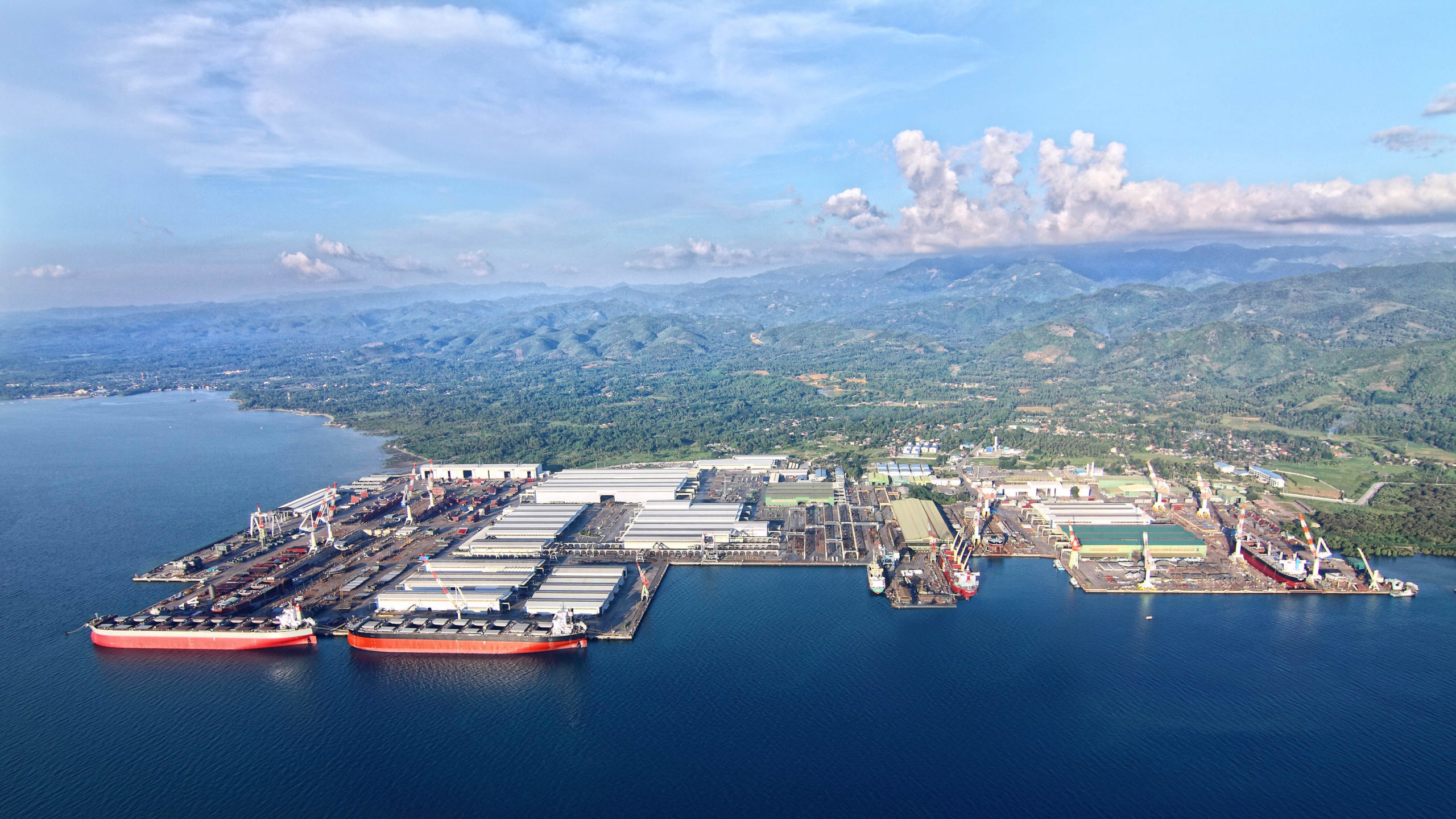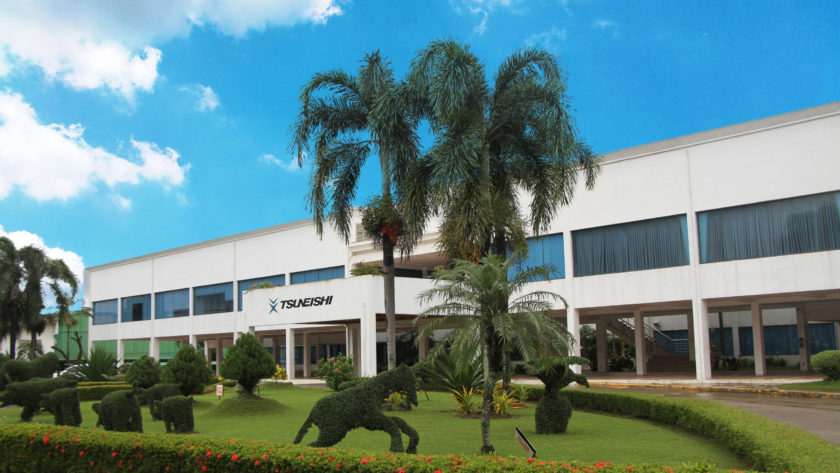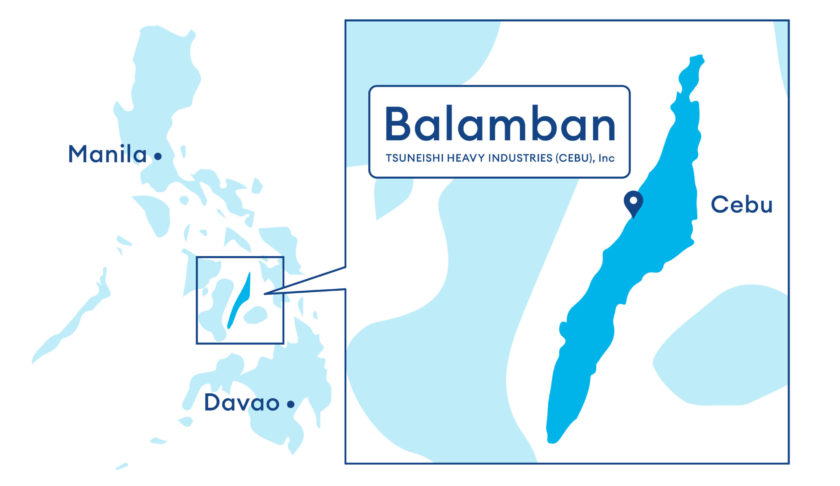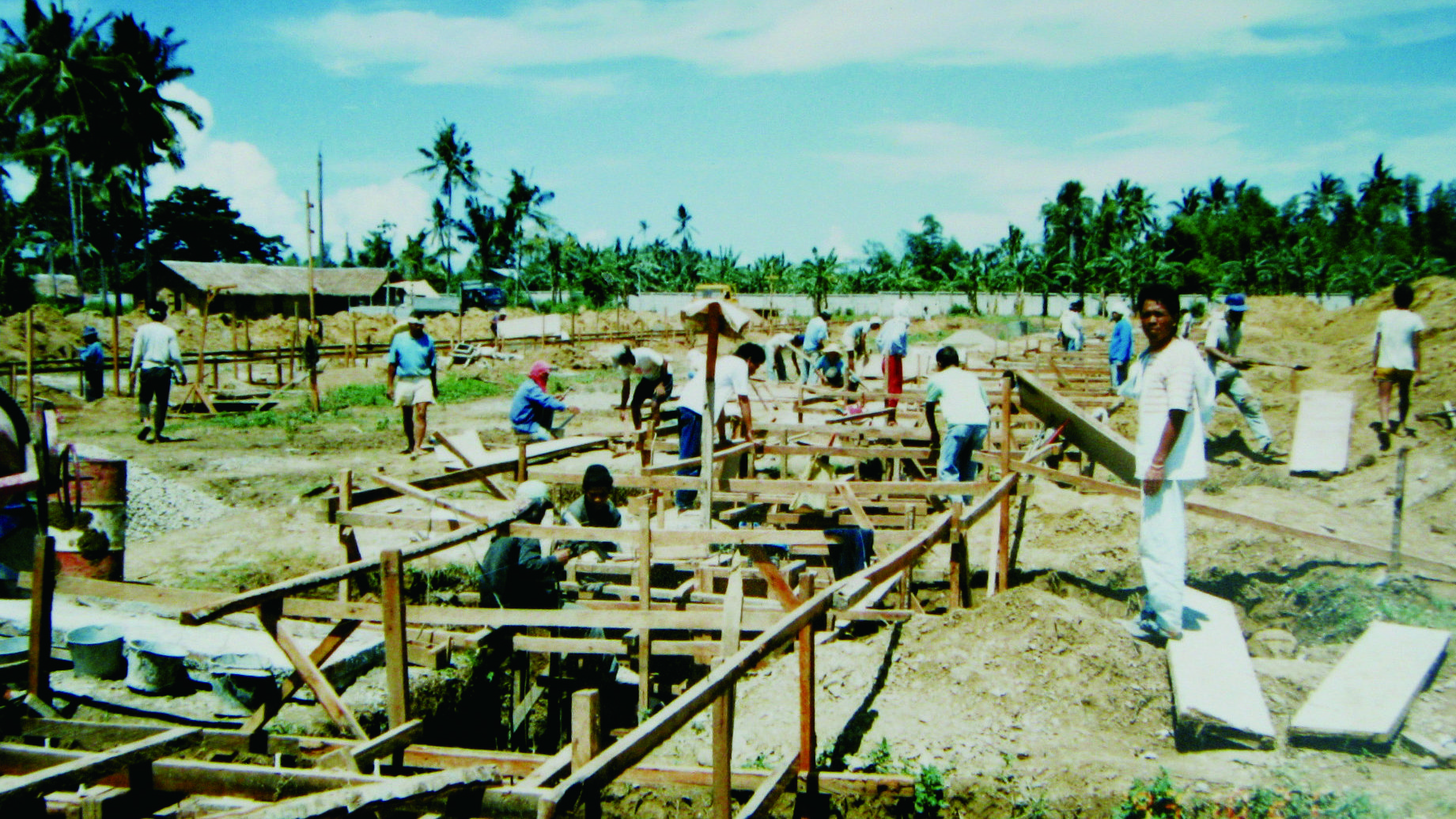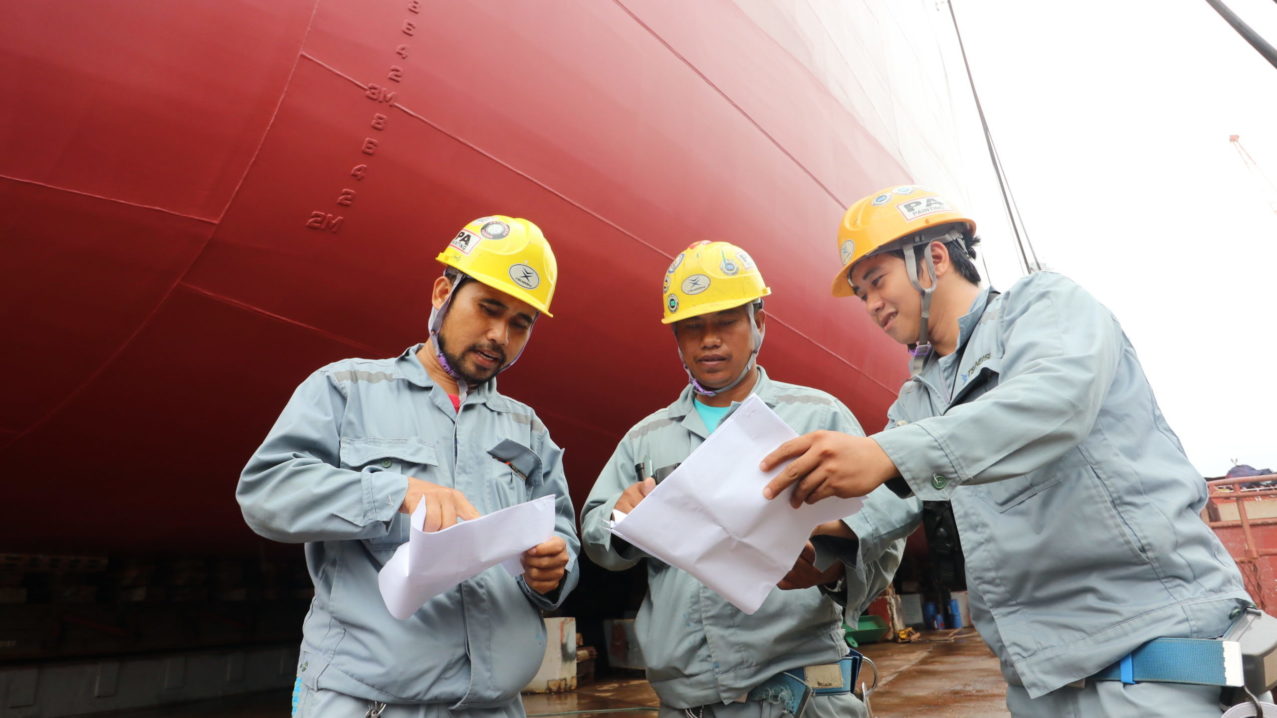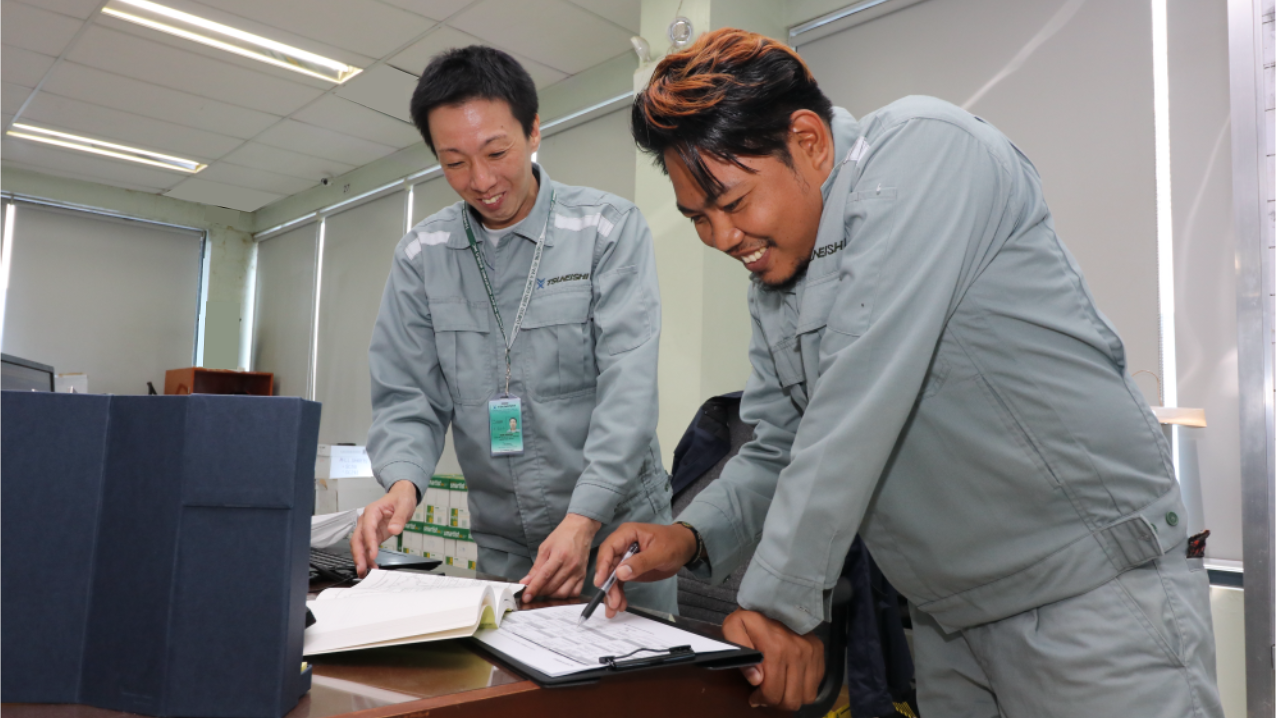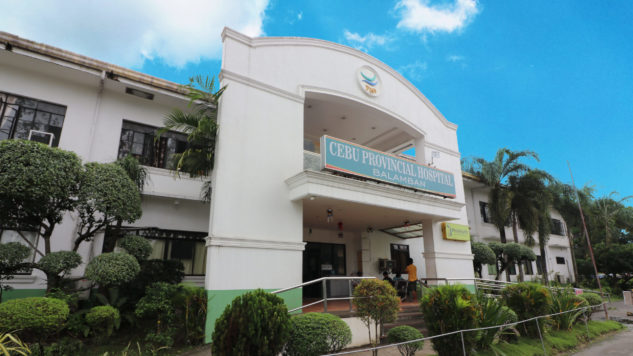PROJECT STORY
New Shipbuilding as the key local industry: 30 years of growth with Balamban, the Philippines
Balamban, leading the Philippines as a shipbuilding nation
The Philippines is widely recognized for its agriculture, fishing, and tourist industries, but did you know that its shipbuilding industry is the 4th largest in the world following China, Korea, and Japan? Leading this industry in the Philippines is the town of Balamban, which is centrally located on Cebu Island, the well-known tourist mecca. While rich in nature with beautiful ocean views, Balamban has a well-developed residential environment that includes modern hospitals and schools, as well as vibrant markets. In municipality rankings that score income, population, and other data, it ranked as a first class municipality.
TSUNEISHI HEAVY INDUSTRIES (CEBU), Inc. (THI), a manufacturing hub of TSUNEISHI SHIPBUILDING, is located in a corner of its industrial area. The spacious site is about triple the size of TSUNEISHI Factory, where TSUNEISHI SHIPBUILDING headquarters are located in Japan, and houses massive facilities such as a 450-meter dock. Over 10,000 workers are engaged here in TSUNEISHI Quality shipbuilding.
Developing land and creating a business that takes roots in the lifestyles of people
With dwindling demand for shipbuilding, the strong yen, and the progress of emerging countries, the early 1990s were a challenging time for the shipbuilding industry in Japan. While making every effort, such as cutting costs like other companies did, TSUNEISHI SHIPBUILDING found a way forward by expanding abroad. This kind of move was considered futile at the time in the shipbuilding industry because it is quite formidable to gather a large group of skilled workers in such a labor-intensive field. On top of that, no other shipbuilding company had ever successfully expanded abroad. This was truly an unprecedented and highly ambitious project.
We chose to enter the Philippines, which was also on the route of our group shipping company. Like Japan, the Philippines is an island country surrounded by sea, and we secured a spacious site of approximately 230,000 square meters along the coast of Cebu Island. This was wasteland with an overgrown primeval forest that lacked infrastructure such as power, waterworks, and roads. We started by leveling the land, paving roads, and recruiting workers. Our first-ever foray into the construction of an overseas shipbuilding factory was completely from scratch.
The shipbuilding business is people-based
It is conventionally assumed that when launching a manufacturing hub, the sequence is to build a factory, employ workers, and then start manufacturing. However, building a ship takes a number of years. Thus for this project, we proceeded with the extremely challenging schedule of constructing the factory and building ships at the same time. This means that we started shipbuilding while facilities were still being developed during factory construction.
In the Philippines at the time, not only shipbuilding, but manufacturing in general had not yet taken root as an industry, so there were very few workers with industrial experience. We asked local Japanese companies that we had partnered with for shipbuilding over the years to assist us in fostering and transmitting skills and crossed the ocean together. Further, we communicated the vision of TSUNEISHI SHIPBUILDING so that local job-seekers would sense the appeal, and offered substantial training by engineers dispatched from Japan to the new employees. Obviously, the residential environment around the factory was not developed from the start either. To have people move to this area and work at the factory, we developed housing and worked to enrich the environment, including building schools and a hospital.
The shipbuilding business is not an equipment business; it is a people-based business. The roots of our business will not grow by simply building a factory and recruiting employees. A business takes root in a community only when employees master skills and pass those skills to the next generation. While the groundwork for this is obviously in steady long-term employment, it is also in the strong bonds between the company and employees and among the employees. Strong relationships with the community and government are also crucial. There is a need to retain the perspective not only of employees, but also their families and society beyond that, and to build the business together.
Launching a business creates employment, which in turn benefits the town, ultimately becoming a force that enriches peoples’ lives. Creating this cycle is the ideal sustainable business in the mind of the TSUNEISHI Group.
When the company was founded, there were few local employees with experience in the manufacturing industry, but now most of the management is Filipino
The company and community live together and grow together
Since its founding in 1992, TSUNEISHI HEAVY INDUSTRIES (CEBU) has built a total of 322 ships (as of September 8, 2022) and grown to become a key factory of the TSUNEISHI Group today. The factory has been commended by the local government for its business activities, generous employee benefits, and contributions to the region and environment, receiving the Outstanding Exporter Award and the Outstanding Community Projects Award from the Philippine Economic Zone Authority* in 2013 and nearly every year since for community projects and other endeavors.
The town of Balamban has greatly changed along with the establishment of the shipbuilding facilities. Ace Binghay, who was mayor of Balamban, said the following in a 2012 interview:
“TSUNEISHI’s shipyard has created many jobs and the quality of life has improved along with economic growth. This triggered a gain in the value of the shipments for fisheries, farmers, and other producers, increased the number of stores, and vitalized the town. Balamban grew from a population of 45,000 in 1990 to 71,000 in 2012. With the population surge, we needed to develop social services, such as education and healthcare, to support the growing community. We especially did not have adequate educational facilities as the number of students had doubled, but the TSUNEISHI Group is providing us with long-term support to meet our needs, such as building, renovating, and repairing schools. TSUNEISHI is our indispensable best partner for developing the region.”
*The Philippine Economic Zone Authority recognizes and awards those companies that have had excellent performance over the year out of the approximately 4,256 registered enterprises (as of December 2, 2022).
Learnings from establishing an overseas base
Building a shipyard from scratch at a remote location where the language is foreign and neither power nor waterworks exist—establishing a base in Balamban was a project of great hardship that TSUNEISHI SHIPBUILDING had never experienced before. If industry was already established and infrastructure already developed, it might have been easier.
However, we were able to reach new heights because we chose this location and continued with operations. Young people who came in search of work when THI was established devoted themselves to working in this town and putting down roots. They eventually started families, and it is their next generation that will sustain the future of the shipyard. This has been achieved by building upon our history.
The “seedling of shipbuilding” that we planted 30 years ago has truly taken root in the land of Balamban in the Philippines and is now abundant with fruit.

